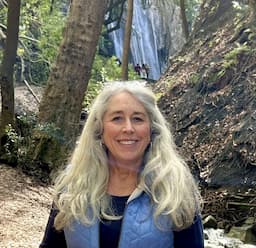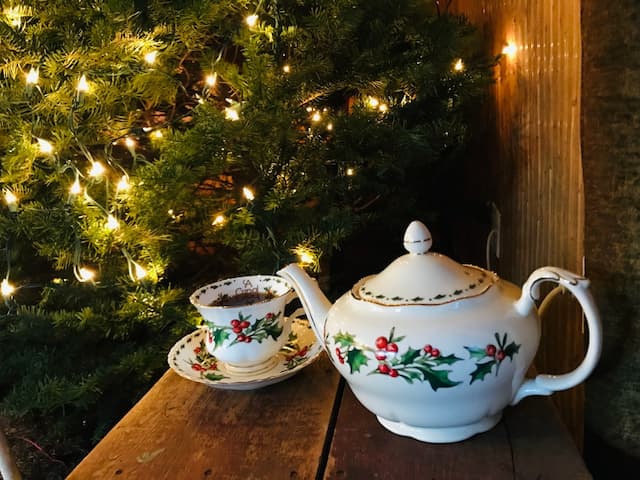Mary, Queen of All Creation: Our Mother of Perpetual Help and Integrity of Creation
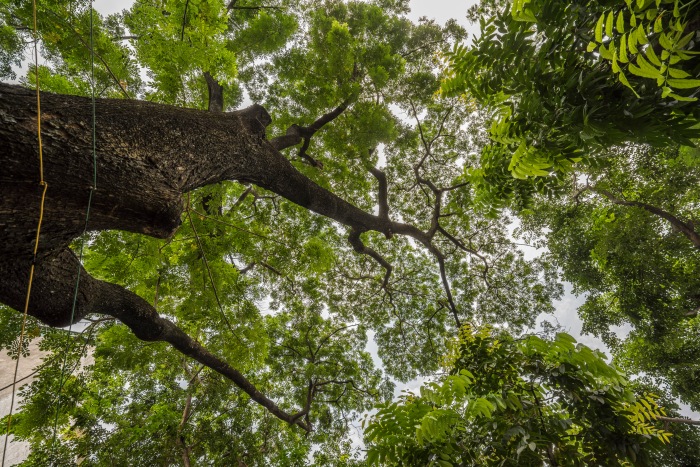
[On today’s Earth Day and as build up to the 150th Jubilee International Congress at Baclaran, here’s some reflections about the Icon and care for creation.]
Lady, full and overflowing with grace,
all creation receives new life from your abundance.
Virgin, blessed above all creatures,
through your blessing all creation is blessed,
not only creation from its Creator,
but the Creator himself has been blessed by creation.
– St. Anselm[1]
The Baclaran shrine and its surroundings is an oasis in this part of the city. It is the only green place in Baclaran where various hard wood and fruit trees around the shrine provide sanctuary and source of food for birds, insects and other animals. Just recently new appearances of wildlife were sighted in the trees—squirrels, a migratory bird and a Philippine hawk (Lawin).
Nobody knows how the squirrels (sometimes seen as two, other times alone) got into the shrine environment. Somebody assumed that some guy who loves exotic animals was keeping squirrels in a cage. He/she might have thought that squirrels will be better off in the shrine compound and let it free inside the compound. The squirrels are very shy though; they spend most of the time hiding in the trees. Occasionally, however, one can see them hopping on tree branches.
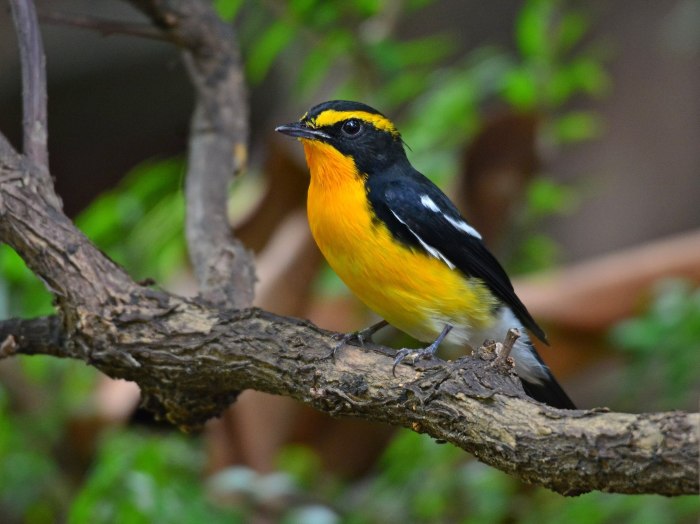
In November 2016, a migratory bird called Narcissus Flycatcher from China was spotted in the trees of the shrine compound. The word spread fast and in no time, many bird photographers and researchers flocked to Baclaran and spent days photographing the special visitor. The narcissus flycatcher (Ficedula narcissina) is a passerine bird in the Old World flycatcher family. It is native to East Asia, from Sakhalin to the north, through Japan across through Korea, mainland China, and Taiwan, wintering in Southeast Asia, including the Philippines and Borneo.[2] It is highly migratory. The bird watchers assumed that the birds chose to stay at the shrine because they found lots of food in the many trees of the compound.
Caring for creation is an important part of the programs and values of the shrine. The shrine, for example, has long been converting its biodegradable waste like food waste, paper waste, dry leaves and twigs into compost.
Care for the environment is also integrated in the liturgy of the shrine. Since 2014, the shrine has been observing the Season of creation. The season of Creation is celebrated during the four Sundays of September that precede the feast of St Francis of Assisi (4th of October). The season of Creation incorporates into the liturgy, prayers and visual elements celebrating God’s creation.
In 2015, the Redemptorist community began a project called greening of the shrine. The first step undertaken in this project is the banning of smoking within the shrine compound. 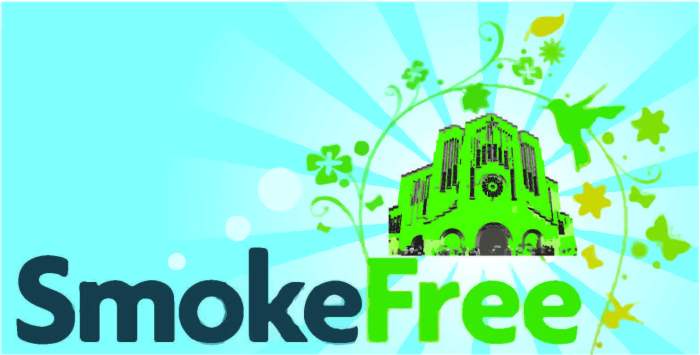 The project also involved using recycled materials for the beautification of the garden and wall art. Moreover, the community started vertical gardening on some of the fences of the shrine. This is aimed at showing that growing vegetables even in the city is feasible, and to encourage the devotees to grow their own vegetables right in their own backyard. Seminars on Laudato Si, Pope Francis’ encyclical on caring for creation, and some concrete ways to care for the environment like waste management and urban gardening were conducted, in light with this greening campaign.
The project also involved using recycled materials for the beautification of the garden and wall art. Moreover, the community started vertical gardening on some of the fences of the shrine. This is aimed at showing that growing vegetables even in the city is feasible, and to encourage the devotees to grow their own vegetables right in their own backyard. Seminars on Laudato Si, Pope Francis’ encyclical on caring for creation, and some concrete ways to care for the environment like waste management and urban gardening were conducted, in light with this greening campaign.
In 2016, solar panels were installed at the shrine and convent. The shrine and the convent now use free electricity from the sun during the day and revert to Meralco at night. There is also a plan for a water harvesting system to harness the rain.
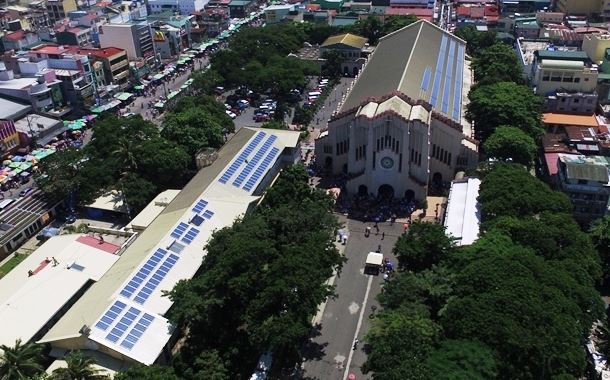
Promotion of the integrity of creation is also incorporated in the novena. In the latest revision of the novena—the 2016 Jubilee edition of the novena—one petition to Our Mother of Perpetual was added for the care of creation: That we may care and protect God’s creation, Loving Mother pray for us.
Disconnection from Creation
It is disheartening to say that in today’s information age of interconnection we have become disconnected with Mother Nature. This loss of connection with creation is contained in the opening lines of Pope Francis’ first social encyclical Laudato Si: Care for the Common Home. Pope Francis laments,
This sister now cries out to us because of the harm we have inflicted on her by our irresponsible use and abuse of the goods with which God has endowed her. We have come to see ourselves as her lords and masters, entitled to plunder her at will. The violence present in our hearts, wounded by sin, is also reflected in the symptoms of sickness evident in the soil, in the water, in the air and in all forms of life. This is why the earth herself, burdened and laid waste, is among the most abandoned and maltreated of our poor; she “groans in travail” (Rom 8:22).
Because of the destruction of the environment, much of our own doing, there is uncertainty of the future. The biggest threat in the future is climate change. The signs are not good and if our present habits and systems continue the worst of our fears will occur. And time is running out.
The twenty-first century has seen the most temperature records broken in recorded history. Last year was the hottest year on record since 1850, and 2015 is set to outstrip 2014. Since the 1950s every continent has warmed substantially, with hot days becoming far more common than cold ones.[3]
Some of our worst fear about climate change is that it could cause the displacement of 250 million people across the world by 2050. Estimates predict that an additional 6 million will have to flee their homes each year if global warming continues at the same rate. Tens of millions of people already have to vacate their homes every year due to natural disasters — which are on the rise. In 2012 alone over 32 million were displaced.[4]
The Earth’s average temperature will continue to rise so long as we continue to produce greenhouse gases. The estimates for how much temperature will increase by 2100 range from 2 degrees Celsius to as much as 6 degrees Celsius.[5]
Contemplatio: Looking through the Icon
What can the icon of Our Mother of Perpetual Help teach us about caring for the environment? Can the Icon help us develop an ecological spirituality?
Icons in Eastern Orthodox theology always evoke a cosmic outlook. This cosmic mindset is especially represented by the background of icons: While the principal character of an icon is a person, its background often represents an image of the transformed cosmos. In this sense, an icon is cosmic since it shows nature but nature in its eschatological and changed state.[6]
Moreover, icons in Eastern Orthodox theology represent nature not in its worldly appearance but in its cosmic and glorious state:
The icon reflects the eschatological, apokatastatic, redeemed and deified state of nature. The features of a donkey or a horse are, in an icon, as refined as those of a person, and, accordingly, the eyes of animals in icons are human, not those of a donkey or a horse. We see in icons the earth and the sky, trees and grass, the sun and the moon, birds and fish, animals and reptiles yet all are subjected to a single design and constitute a single church in which God reigns.[7]
This perspective can help us understand more the meaning of the golden background of the icon of Our Mother of Perpetual Help. The golden background that occupies the whole icon is a symbol of heaven, where Jesus and Mary and the saints now dwells. The light of heaven which passes through their clothing indicates the heavenly joy which Jesus and Mary bring to the hearts of all the faithful. The cosmic outlook of the icon can deepen our understanding of heaven. Heaven as our final destination is not only the glorification of humanity but of all creation with God.
The reverse perspective of the icon can help us promote a healthy attitude towards creation. The reverse perspective of the icon implies that before an icon, we the viewer is not the master, center or virtual owner of the world but a participant in God’s creation. With the use of reverse perspective the world of the icon opens up. Most icons have a semi-circle outline, open space—we are part not outside of the icon.
Contemplating the icon of Our Mother of Perpetual Help reminds us that we are not masters of creation or center of the universe. Creation itself is an icon of the grandeur of God. Human beings are not outside but part of creation. Creation is calling human beings to participate in creation’s calling of giving adoration and glory to God. Nature, cosmos, the entire material universe is a reflection of divine beauty, and this is what the icon is called to reveal. It is possible for the world to participate in divine beauty but only to the extent that it “has not submitted to vanity” and has not lost the ability to sense the presence of God.[8]
Looking at creation through the icon entails what Hans Boersma calls, a participatory or sacramental ontology. Boersma describes participatory ontology,
Sacramental ontology insists that not only does the created world point to God as its source and “point of reference,” but that it also subsists or participates in God … [B]ecause creation is a sharing in the being of God, our connection with God is a participatory, or real, connection — not just an external, or nominal, connection.[9]
The sacramental worldview of the icon can help us to see in the environment our Creator, the glory of God, and the glory of our destiny. As Gerard Manley Hopkins expressed it: “The world is charged with the grandeur of God. It will flame out, like shining from shook foil; It gathers to a greatness, like the ooze of oil.”
Missio: Following Jesus with Mary
Mary is the epitome of God’s new creation. Mary’s assumption represents the hope and final destiny that all of creation will become. John Janaro articulates,
Mary is also, we might say, an icon of the whole redemption of creation. In her we see already the radical fulfillment of all things, the perfect penetration of divine love into created being. The glorification of Mary in the Assumption is the beginning of the New Creation in which God will “be all, in all” (1 Cor. 15:28), and it reveals the eternal value of every moment in every life, the transcendent significance of each circumstance in life, because everything comes forth from God and is ordained to his glory.[10]
On the other hand, the Australian Redemptorist Fr. Anthony Kelly sees the life Mary itself as the quintessence of generativity of creation. Mary, the virgin mother of God, is
the paradigmatic instance of creation open to, collaborating with, and transformed by, the creative mystery of God in Christ. As the Mother of Christ, she symbolises the generativity of creation under the power of the Spirit. In her, as the Advent antiphon has it, “the earth has been opened to bud forth the Saviour”.[11]
In this way, Mary can be rightly called Queen of all Creation. Pope Francis in Laudato Si meditates on the meaning of Mary, Queen of all Creation and its implications for us:
Mary, the Mother who cared for Jesus, now cares with maternal affection and pain for this wounded world. Just as her pierced heart mourned the death of Jesus, so now she grieves for the sufferings of the crucified poor and for the creatures of this world laid waste by human power. Completely transfigured, she now lives with Jesus, and all creatures sing of her fairness. She is the Woman, “clothed in the sun, with the moon under her feet, and on her head a crown of twelve stars” (Rev 12:1). Carried up into heaven, she is the Mother and Queen of all creation. In her glorified body, together with the Risen Christ, part of creation has reached the fullness of its beauty. She treasures the entire life of Jesus in her heart (cf. Lk 2:19, 51), and now understands the meaning of all things. Hence, we can ask her to enable us to look at this world with eyes of wisdom. (Laudato Si, #241)
St. Anselm in a sermon used in the Roman Office of Readings for the Solemnity of the Immaculate Conception on December 8 calls Mary, gives honor to Mary as Mother of the Re-created World!
The whole universe was created by God, and God was born of Mary. God created all things, and Mary gave birth to God. The God who made all things gave himself form through Mary, and thus he made his own creation. He who could create all things from nothing would not remake his ruined creation without Mary.[12]
God, then, is the Father of the created world and Mary the mother of the re-created world. God is the Father by whom all things were given life, and Mary the mother through whom all things were given new life. For God begot the Son, through whom all things were made, and Mary gave birth to him as the Savior of the world. Without God’s Son, nothing could exist; without Mary’s Son, nothing could be redeemed.[13]
 Call to Action
Call to Action
Devotion to Our Mother of Perpetual Help can help us to take action especially for awareness and preparedness for natural calamities. Our devotion Our Mother of Perpetual Help can also be an instrument of making people aware of their possible role in wreaking havoc to the environment and their role of caring for the environment.
I remember when I was stationed in the Bicol mission in Legaspi in 1992, we came up with a project on how to connect devotion to Mary with the care for creation. This happened during the month of October, the month of the rosary. Every day for the whole month of October we prayed the Rosary. Together with meditating on the life of Jesus and Mary in the mysteries of the rosary, we also meditated on the mysteries of creation: Joyful mysteries correspond with the beauty and grandeur of God’s gift of creation, sorrowful mysteries resemble the destruction of creation by our own doing and glorious mysteries relate to our desire and collective action of cooperating with God’s redemption of creation.
The project, however, entailed not just praying the rosary while meditating on the life of Jesus and Mary vis-à-vis the situation and live of the environment. The praying of the rosary inspired the local community to take some concrete action like tree planting, clean-up of each one’s surroundings, recycling and backyard gardening.
What concrete actions can you develop in line with the care of God’s creation as a fruit of your devotion to Our Mother of Perpetual Help? How can your devotion to Our Mother of Perpetual Help spur you into concrete action in response to the challenge of climate change?
[1] Excerpt from a sermon of St. Anselm (Oratio 52; PL 158, 955-956) which is used in the Roman Office of Readings for the Solemnity (Solemn Feast) of the Immaculate Conception on December 8 along with the accompanying biblical reading from Romans 5:12-20.
[2] Narcissus flycatcher, Wikipedia, https://en.wikipedia.org/wiki/Narcissus_flycatcher
[3] Cara McGoogan, Climate change cheat sheet: what you need to know, 4 December 2015 http://www.wired.co.uk/article/climate-change-cheat-sheet
[4] Climate change cheat sheet
[5] Climate change cheat sheet
[6] Theology of Icon in the Orthodox Church, 6.
[7] Theology of Icon in the Orthodox Church, 6.
[8] Theology of Icon in the Orthodox Church, 8.
[9] Boersma, Heavenly Participation, 24.
[10] John Janaro, “The Blessed Virgin in the Ecclesial Movement “Communion and Liberation”,” Marian Studies: Vol. 54, Article 12 (2003). Available at: http://ecommons.udayton.edu/m_studies/vol54/iss1/12, 127.
[11] Anthony Kelly, CSsR, The Mystery of Christ and our Mother of Perpetual Help, 2.
[12] St. Anselm, Oratio 52.
[13] St. Anselm, Oratio 52.

